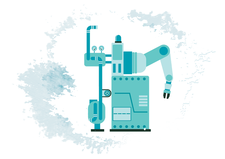Self-organization with Getting Things Gnome
To-Do List

Getting Things Gnome helps with getting things done. Users can enter outstanding tasks and assign keywords and completion dates to their task lists in the foreground.
Getting Things Done (GTD) [1] is a self-organization method developed by David Allen. The GTD approach is based on the theory that trying to maintain a complex task list in your head takes a toll on concentration. The idea is to move task tracking out of the mind and put it in the hands of a trusted external system. The system tracks the tasks so the user can focus on solving and completing the problems.
According to the GTD approach, everything you deal with – be it an article you are interested in, the tax return you need to submit, or a birthday party you are planning – passes through the GTD system and is processed according to specific criteria that help you stay organized.
The system works both with physical objects (e.g., a pen and paper, an inbox that is a real box, and a physical filing system) and with digital objects. Various applications let you implement the GTD system. One handy and free program that helps with GTD is Getting Things Gnome (GTG).
[...]
Buy this article as PDF
(incl. VAT)
Buy Linux Magazine
Subscribe to our Linux Newsletters
Find Linux and Open Source Jobs
Subscribe to our ADMIN Newsletters
Support Our Work
Linux Magazine content is made possible with support from readers like you. Please consider contributing when you’ve found an article to be beneficial.

News
-
Mozilla Plans to AI-ify Firefox
With a new CEO in control, Mozilla is doubling down on a strategy of trust, all the while leaning into AI.
-
Gnome Says No to AI-Generated Extensions
If you're a developer wanting to create a new Gnome extension, you'd best set aside that AI code generator, because the extension team will have none of that.
-
Parrot OS Switches to KDE Plasma Desktop
Yet another distro is making the move to the KDE Plasma desktop.
-
TUXEDO Announces Gemini 17
TUXEDO Computers has released the fourth generation of its Gemini laptop with plenty of updates.
-
Two New Distros Adopt Enlightenment
MX Moksha and AV Linux 25 join ranks with Bodhi Linux and embrace the Enlightenment desktop.
-
Solus Linux 4.8 Removes Python 2
Solus Linux 4.8 has been released with the latest Linux kernel, updated desktops, and a key removal.
-
Zorin OS 18 Hits over a Million Downloads
If you doubt Linux isn't gaining popularity, you only have to look at Zorin OS's download numbers.
-
TUXEDO Computers Scraps Snapdragon X1E-Based Laptop
Due to issues with a Snapdragon CPU, TUXEDO Computers has cancelled its plans to release a laptop based on this elite hardware.
-
Debian Unleashes Debian Libre Live
Debian Libre Live keeps your machine free of proprietary software.
-
Valve Announces Pending Release of Steam Machine
Shout it to the heavens: Steam Machine, powered by Linux, is set to arrive in 2026.

